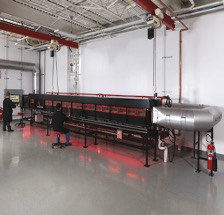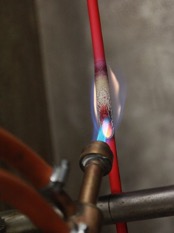By Tommy Lu – Aerospace Wire & Cable
Plenum cables are specialized wires designed for use in the plenum spaces of buildings, which mainly serve as pathways for air circulation in HVAC systems. Unlike standard cables, plenum cables are constructed with fire-retardant materials to meet strict safety standards for plenum spaces. They are crucial in reducing fire hazards and limiting the release of harmful smoke during a fire. By slowing down the spread of flames and toxic fumes, plenum cables help safeguard both the building’s occupants and its infrastructure, preventing rapid fire propagation and minimizing potential damage.
Before Plenum rated Cables
Before the adoption of plenum-rated cables, there were significant challenges in addressing fire safety concerns, particularly in large high-rise buildings. As the number of such structures increased throughout the late 20th century, so too did the incidence of building fires, prompting a critical reassessment of fire safety standards.
Following the detailed analysis of these fires revealed alarming vulnerabilities inherent in plenum spaces. It became evident that these areas served as highly efficient pathways for the transmission of both flames and smoke throughout a building’s structure, damaging it and endangering the lives of those within. This revelation highlighted the urgent need to prioritize plenum fire safety measures. Recognizing the danger of using regular cables in plenum spaces, it became clear that better methods were needed to handle this potential fire hazard.
Evolution of Plenum rated Cables
The initial approach taken by the National Electrical Code (NEC) prior to 1980, mandates the protection of cables in plenum spaces by encasing them in metal raceways, conduits, or by using cables with metal sheaths. This solution aimed to enhance fire safety and prevent the spread of fires. However, it became evident that these measures were insufficient in addressing core fire safety concerns.
Despite the sense of safety and security initially provided by these measures, encasing cables in raceways, conduits, or metal sheaths did not comprehensively mitigate the risk of fire propagation and did not fully eliminate their contribution to the fuel load, particularly because many plastics used in cable insulation could release flammable or toxic gases at high temperatures. These gases could easily escape from the conduit or sheath and spread throughout the HVAC of a building, thereby diminishing the effectiveness of this solution. Furthermore, enforcing compliance with these mandates required rigorous monitoring of construction practices, leading to increased costs and extended project durations. With the addition of the complexity of reconfiguring cables within existing raceways, prompted the search for a more effective solution.
UL 910 / NEC 262
Around 1980, Underwriters Laboratories (UL) pioneered a standardized test, UL910, to precisely measure the fire and smoke performance of cables. Their research conclusively revealed that FEP (fluoropolymer) material without any metal conduits or sheathing outperformed PVC and PE materials enclosed in metal conduits or sheathing. This superiority stemmed from FEP cables’ exceptional ability to resist flame spread and minimize smoke generation, making them highly demanded in the industry. As a result, FEP not only met the demands of regulatory compliance but also provided a more effective and sustainable solution for construction projects, ultimately creating the first plenum rated cable (Figure 1).

Recognizing the significance of the UL 910 test, the National Fire Protection Association (NFPA) integrated it into its 90A standards addressing HVAC. Eventually, NFPA established its own standard, NFPA 262, directly derived from UL 910. This development enabled laboratories beyond UL to assess cables for plenum applications, broadening the scope of evaluation and ensuring consistent safety standards across the industry (Figure 2).

Conclusion
In conclusion, the adoption of plenum rated cables represents a crucial advancement in enhancing fire safety within buildings. This advancement is highlighted by products from Aerospace Wire & Cable. Established in New York 1986, Aerospace wire and cable brings over 38 years of industry experience specializing in the production of plenum wire and cable, while maintaining unwavering commitment to excellence and customer satisfaction.
Adhering to strict quality control procedures in accordance with UL standards, Aerospace Wire and Cable offers products rated for low smoke emission and fire resistance solutions tailored to meet your specific needs. These cables offer essential protection for both property and human life during emergencies by inhibiting the spread of fire and reducing smoke. Moreover, their durability and corrosion resistance enhance their ability to withstand the challenges of installation and environmental factors, ensuring top-notch performance and consistent reliability, proving Aerospace’s dedication to safety and quality. Contact Aerospace Wire & Cable at 800-395-0200 or email them at [email protected].






























































